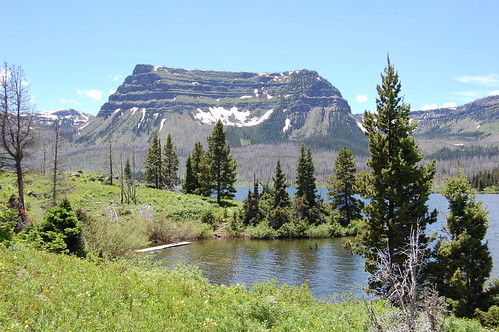
In the Flat Tops Wilderness of Colorado, there is a grand rock formation named the Amphitheatre that serves as the backdrop for the overlook to Trappers Lake known as the Cradle of Wilderness.
The area forms a sort of natural amphitheater of majestic volcanic cliffs, 320 surface acres of pristine lake and majestic volcanic rock cliffs and an expansive sky. The area holds a sacred place in history for those who cherish the values and spirit of wilderness.
It will also be the site of a panel discussion on the “Wilderness Idea” on Aug. 22 from 10 a.m. to noon MST as the White River National Forest commemorates the Cradle of Wilderness area as part of the 50th Anniversary of the Wilderness Act of 1964. The public is invited to tune in to this live stream event.
In 1919, Arthur Carhart, a Forest Service landscape architect, realized the uniqueness of the location when he stood on the shoreline of Trappers Lake and took in the grandeur. At the time, Carhart’s task was to survey the area to build a recreational housing development of summer cottages. However, what Carhart saw and experienced at Trappers Lake compelled him to strongly recommend to his supervisors that the area remain undeveloped. That decision became the first of many steps toward establishing wilderness areas on lands managed by the agency.
The panel discussion will take place at the overlook in front of Trappers Lake that sits just outside the wilderness area.
Paul Sutter, associate professor University of Colorado and author of “Driven Wild,” will moderate the panel of speakers that will include Tom Wolf, author of “Wilderness Prophet,” a biography of Carhart; Bill Carhart, a relative of Arthur Carhart; Ralph Swain, wilderness program manager, Forest Service Rocky Mountain Region; Matt Pearce, an environmental historian at Oklahoma University and native of Meeker, Colorado, near the Flat Tops Wilderness Area; and Jill Ozarski, senior natural resource advisor for U.S. Senator Mark Udall.
The speakers will explore two topics: how one person can make a difference and how the Forest Service explored the idea of wilderness designations and was the first agency to establish wilderness areas. The discussion will also be recorded and posted later on the Rocky Mountain Region’s 50th Wilderness Anniversary web site.
“We encourage the public to tune in to this commemorative event and learn why Trappers Lake is considered the cradle where the idea of wilderness was nurtured,” said Scott Fitzwilliams, forest supervisor of the White River National Forest. “This place is special because Arthur Carhart championed and believed in the idea of keeping Trappers Lake unaltered and pristine. His commitment to this idea helped the agency take an unprecedented step toward the wilderness designations we manage today.”
In addition to the panel discussion, the day’s activities will also feature a journal reading from wilderness rangers who will complete a special tribute journey to the commemoration celebration by hiking 20 miles through the Flat Tops Wilderness. Their journal entries will also be posted on the Wilderness Anniversary site.
A variety of events also are planned the next day, including book signings and demonstrations of primitive skills allowed in wilderness areas, including crosscut sawing, horse packing, leatherworking and Dutch oven cooking.
